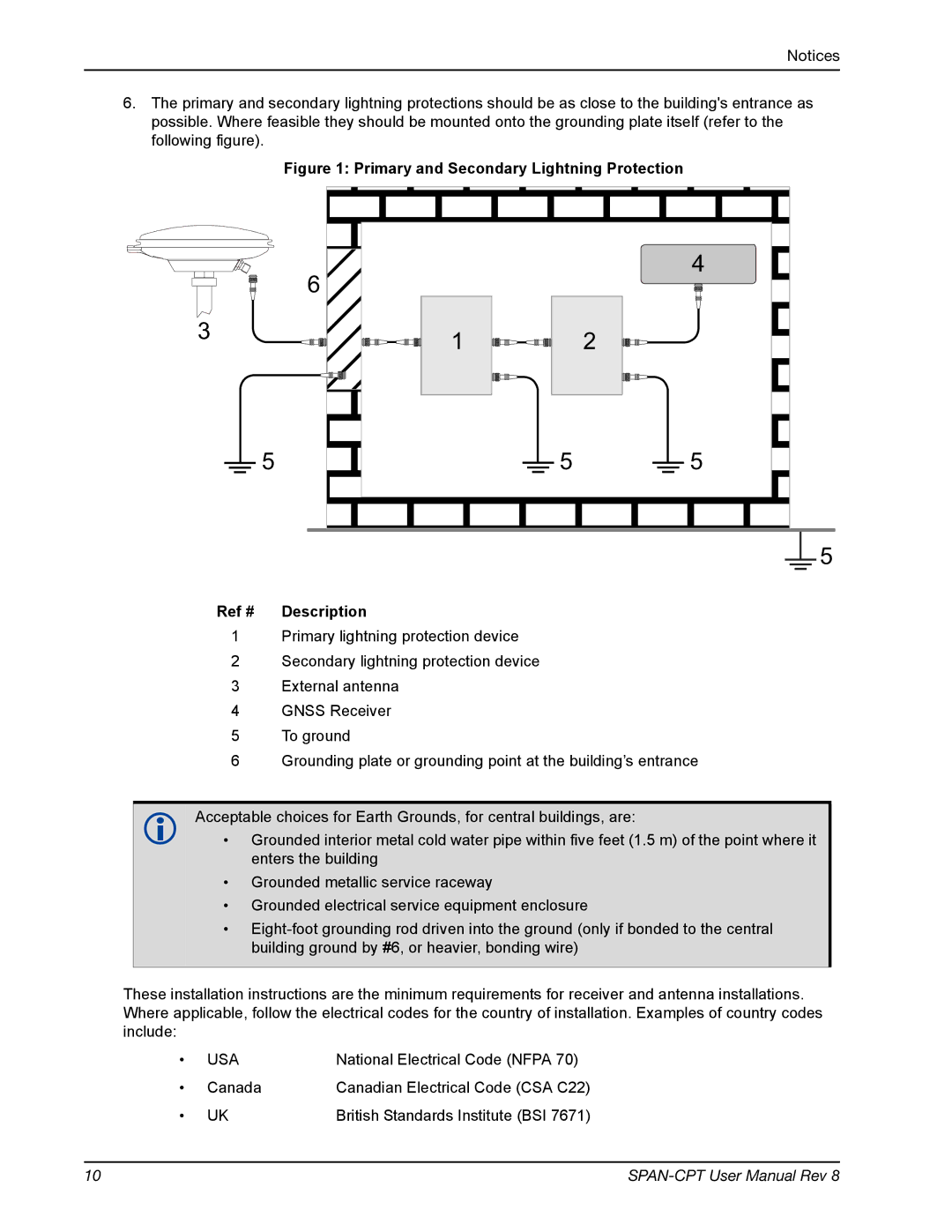
Notices
6.The primary and secondary lightning protections should be as close to the building's entrance as possible. Where feasible they should be mounted onto the grounding plate itself (refer to the following figure).
Figure 1: Primary and Secondary Lightning Protection
6 | 4 |
|
3 | 1 | 2 |
|
![]() 5
5
5 |
|
|
|
|
| 5 |
|
|
|
|
| ||
|
|
|
|
|
5
Ref # Description
1Primary lightning protection device
2Secondary lightning protection device
3External antenna
4GNSS Receiver
5To ground
6Grounding plate or grounding point at the building’s entrance
Acceptable choices for Earth Grounds, for central buildings, are:
•Grounded interior metal cold water pipe within five feet (1.5 m) of the point where it enters the building
•Grounded metallic service raceway
•Grounded electrical service equipment enclosure
•
These installation instructions are the minimum requirements for receiver and antenna installations. Where applicable, follow the electrical codes for the country of installation. Examples of country codes include:
• | USA | National Electrical Code (NFPA 70) |
• | Canada | Canadian Electrical Code (CSA C22) |
• | UK | British Standards Institute (BSI 7671) |
10 |
